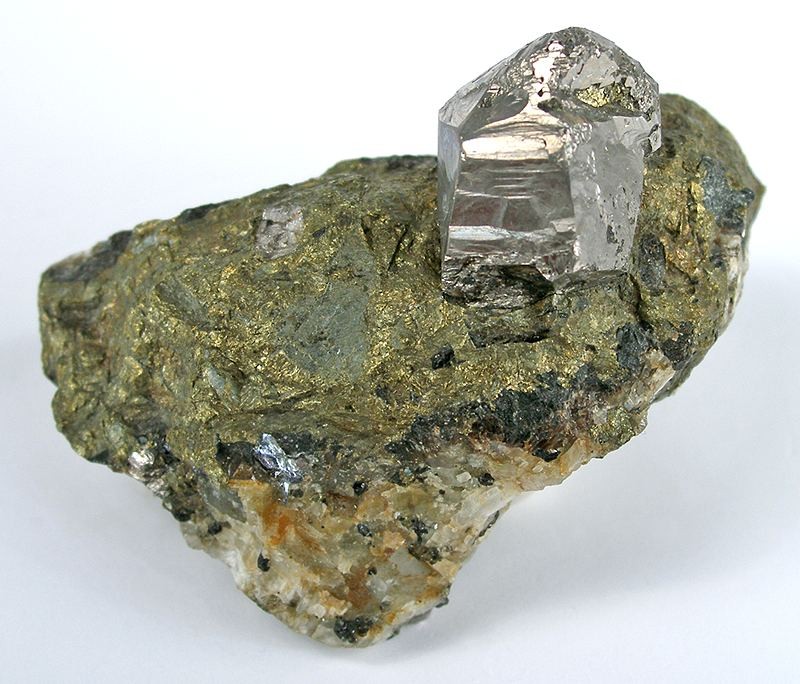
钴矿宝石:特性、含义、价值等
 钴矿是一种由钴、硫和砷组成的金属宝石。它作为工业材料和收藏矿物比作为珠宝宝石更为知名。
钴矿是一种由钴、硫和砷组成的金属宝石。它作为工业材料和收藏矿物比作为珠宝宝石更为知名。
钴矿稀有吗?没错,钴矿作为矿物相当稀有,作为宝石更是罕见。虽然它的金属光泽和一些颜色很吸引人,但它很少出现在珠宝中。
钴矿是什么颜色的?它通常是银白色的,但也可以是红色、黑灰色,甚至是带有紫色底色的钢灰色。
想了解更多关于这颗闪亮宝藏的信息吗?请继续关注,我们将为您详细介绍钴矿的性质、历史、价格、益处等等!
 图片来源:Rob Lavinsky, iRocks.com – CC-BY-SA-3.0
图片来源:Rob Lavinsky, iRocks.com – CC-BY-SA-3.0
什么是钴石?
钴矿是一种金属半宝石,其绰号为:
亮白色钴
钴
钴蓝色一瞥
格兰兹科巴尔特 / 格兰兹科博尔德 / 格兰兹科巴尔特基斯
最后三个是各种德语术语,翻译为“有光泽的钴”。
等等,钴和钴矿是一样的吗?不完全一样,但是钴矿含有钴,而钴是其工业价值的重要组成部分。
那么,钴矿有什么用途?
钴矿的用途
钴矿是钴的主要矿石之一。然而,如今大多数钴是作为铜和镍冶炼的副产品而产出的。
钴元素并不是非常稀有,但它对许多领域都至关重要,包括军事和电子工业等顶级领域。
目前,钴的主要用途是可充电电池电极和超级合金(常用于飞机发动机)。
钴的其他用途包括制造:
磁铁
陶瓷和玻璃
油漆、油墨和清漆
不锈钢和磁性钢
硬质合金(主要用于切削的极硬材料)
高密度音频和视频记录设备
电镀
医疗用品消毒器、医用示踪剂、伽马射线癌症治疗(钴-60)
维生素B12(钴胺素)
催化剂
催化剂的用途主要与制造清洁燃料等可再生能源有关。
最后,科学家们已经合成了钴矿,以研究其矿物学。
说到它的矿物学……
 上图:基质上的银色钴矿 | 图片来源:Rob Lavinsky, iRocks.com – CC-BY-SA-3.0
上图:基质上的银色钴矿 | 图片来源:Rob Lavinsky, iRocks.com – CC-BY-SA-3.0
钴矿规格和特性
钴酸盐是一种硫砷化钴,其化学式为CoAsS。铁是一种非常常见的杂质,其含量高达10%,因此有人将其化学式写为(Co,Fe)AsS。另一种常见的杂质是镍,有时还会包含铜、铅或锑。
这种石头类似于黄铁矿,在晶体形状上具有相同的对称性,因为黄铁矿是立方体,而钴矿通常是伪立方体或伪黄铁面体(十二面体,五边形)。
钴矿通常以颗粒状至致密块状的形式存在。
通常可以通过钴矿的高密度来识别它,因为它比大多数宝石都重。
钴矿特性列表:
莫氏硬度:5.5
颜色:银白色、红银色、黑灰色、紫钢灰色、黑色
晶体结构:正交,伪立方
光泽: 金属光泽
透明度:不透明
折射率:超出宝石学仪器的极限
密度:6.33
乳沟:{001} 完美
骨折:不均匀/不规则
条痕:灰黑色
发光:无
多色性:在晶粒边界上无法观察到或非常弱
双折射:无
分散性:无
钴矿的种类
根据所含杂质,钴矿可分为以下几种:
铁钴矿:铁取代了部分钴
含铁钴矿:含有一些铁
含钯钴矿:含钯量高达 1.1%(重量百分比)
尽管名字如此,球钴矿(或球钴矿)实际上是一种碳酸钴。另一个容易混淆的矿物是赤藓矿,它是一种水合砷酸钴,也被称为“红钴”或“钴闪石”。
 上图:钴矿晶体标本,置于古董蜡基座缩略图支架上 | 图片来源:Rob Lavinsky, iRocks.com – CC-BY-SA-3.0
上图:钴矿晶体标本,置于古董蜡基座缩略图支架上 | 图片来源:Rob Lavinsky, iRocks.com – CC-BY-SA-3.0
钴矿的意义和历史
钴石象征着创造力、想象力以及从自我怀疑或自我限制中解放出来。
一种流行的美洲原住民饰品被称为“Naja”,通常用钴矿凸圆形宝石制成。Naja 可以作为单个吊坠佩戴,也可以作为南瓜花项链的一部分佩戴,其名称源于纳瓦霍语中的“新月”,因其形状呈新月状。
眼镜蛇珠宝的设计被认为起源于摩尔人。不同艺术家的设计风格各异,但一些摩尔人的设计在新月的底部刻有双手,象征着“法蒂玛之手”或“哈姆萨”,这是一种与 各种宗教相关的保护性象征。
在纳瓦霍人中,纳迦图案象征着在巨大困难中的坚韧以及在冲突中创造美丽的理念。
历史
古埃及人和美索不达米亚人很可能使用钴矿将各种材料(珠宝、油漆、玻璃、陶瓷等)染成独特的蓝色,因为钴作为着色剂的使用可以追溯到青铜时代(公元前 3300 年至公元前 1200 年)。
“钴矿”这个名字与“钴”有关,后者有着令人着迷的词源。
大约在 1500 到 17 世纪,德国萨克森州的银矿工经常会发现看起来像银矿石但无法冶炼并散发出腐臭有毒烟雾(硫化砷)的矿物。
他们把这个问题归咎于一种名叫“狗头人”的神话生物。他们认为这个淘气的小妖精要么是施了咒语,阻止石头中的金属被提取出来,要么是偷走了真正的银矿石,并用看似银色但无法使用的岩石代替它们。
一位技艺精湛的冶炼师来到镇上,对这些原本毫无价值的岩石进行了实验。他的保密行为几乎让镇上的人怀疑他使用了巫术,直到他们得知他发现了一种新的亮蓝色颜料。
钴的发现
多年来,人们一直认为这种独特的蓝色来自铋元素。然而,瑞典化学家乔治·勃兰特却认为这是一种未知元素。18世纪30年代,他证明了自己的理论,并在德国“狗头人”矿石中发现了钴元素。
1739年,勃兰特发表了他发现钴的文章,称其为一种不同于铋的半金属元素。1742年,他成功分离出钴。
1797 年,德国化学家马丁·海因里希·克拉普罗特 (Martin Heinrich Klaproth) 撰写了最早关于钴矿的出版物之一。他将其命名为 Glanzkobalts,德语意思为“有光泽的钴”。
 图片来源:Rob Lavinsky, iRocks.com – CC-BY-SA-3.0
图片来源:Rob Lavinsky, iRocks.com – CC-BY-SA-3.0
钴矿的治疗特性
钴酸盐晶体主要呈灰色,具有其他灰色宝石的温和接地和保护特性,也主要用作能量疗愈中的根轮石。
身体康复
从物理角度来看,钴酸盐被认为有助于:
感染
血液问题
肺部或呼吸系统问题
细胞疾病
免疫系统减弱
情绪疗愈
钴矿据说能提升情绪,尤其有利于心灵健康。水晶治疗师推荐它能提升创造力,消除自我怀疑,并提升智力和情商。
钴矿宝石特性
钴矿的价值不像其他宝石那样标准化,因为它们很少出现在珠宝中。我们仍然会讨论每个标准因素如何适用于钴矿:
颜色:大多数宝石呈深灰色,如果光泽明亮,则更受欢迎。然而,略带红色或紫色的宝石也具有价值。
切工:大多数钴矿宝石被切割成美观的金属凸圆形宝石。这种宝石很少进行刻面。印度拉贾斯坦邦的钴矿晶体被称为“sehta”,当地人用它来制作金银首饰或装饰品上的蓝色珐琅。
光泽:明亮、均匀分布的银色金属光泽能够提升钴矿的价值。钴矿的光泽是其在宝石界的首要吸引力。
克拉重量:刻面钴矿十分罕见,但有些可达15至25克拉,部分原因是钴矿密度高。块状材料可以制成几乎任何尺寸的凸圆形宝石或雕刻品。
在到达宝石切割师之前,钴矿是如何形成的?
 图片来源:Rob Lavinsky, iRocks.com – CC-BY-SA-3.0
图片来源:Rob Lavinsky, iRocks.com – CC-BY-SA-3.0
钴矿的形成和来源
钴矿通常是由含有溶解元素的热水沉积在岩石缝隙中,水蒸发后,溶解元素结晶成钴矿而形成的。它也可以在岩石经历变质作用,将内部的矿物转变为钴矿时形成。
因此,这种石头可以在接触变质岩和高温热液矿床中找到。
钴矿通常出现在以下地区附近:
从地理上看,钴矿最常见于哪里?
采矿地点
宝石级钴矿材料的主要产地是加拿大(特别是安大略省科博尔特)、挪威和瑞典(特别是图纳伯格)。
钴矿晶体的其他重要来源有:
澳大利亚
阿塞拜疆
智利
刚果民主共和国
德国
印度
墨西哥
摩洛哥
英国(英格兰)
美国(加利福尼亚州、科罗拉多州、爱达荷州、犹他州)
 图片来源:Rob Lavinsky, iRocks.com – CC-BY-SA-3.0
图片来源:Rob Lavinsky, iRocks.com – CC-BY-SA-3.0
钴矿价格和价值
尽管钴矿宝石相对稀有,但价格并不昂贵。这可能是因为需求量不大。
出售的多面钴矿价格一般约为每克拉 10 至 30 美元,或每颗约为 50 至 400 美元(克拉重量约为 6 至 25 克拉)。
钴矿凸圆形宝石的价格从20美元到150美元不等,金属光泽更亮的宝石价格更高。滚磨钴矿的价格约为每克拉0.15美元。
粗糙的钴酸盐标本(小晶体)价格约为 5 美元或更低,而硫化物基质上的巨大标本价格则高达 1,500 至 4,000 美元甚至更高。
在结束之前,我们将讨论宝石的护理。
钴矿的保养和维护
安全第一:由于钴矿含有有毒的砷和钴,因此必须避免吸入切割或抛光过程中脱落的颗粒。
抛光或成型的珠宝通常佩戴安全,但我们建议进行保护性镶嵌,以免刮伤。处理钴矿石原石后务必洗手,并将其远离任何可能将其放入口中的人——例如狗、儿童等。
您可以使用软牙刷、温水和温和的肥皂清洁钴石。
觉得钴矿很迷人吗?
钴或许比钴矿更出名,但如果没有这颗宝石,我们根本就不会知道它!这种光泽美丽的宝石有着丰富的传说历史,从美洲原住民到中世纪德国,都广为流传。它散发着令人心旷神怡的美感,值得收藏。
搜索Gemstone Encyclopedia
最新的文章
彩虹格纹日光石是一种长石,由于内部含有各种包裹体,呈现出三种绚丽的光学效应。它绚丽多彩的光泽和格纹图案使其成为收藏家梦寐以求的珍宝!
12th Jan 2026
文章分类
How To's is where you will find helpful articles from gem Rock Auctions on how to cut gemstones, select gemstones and buy gemstones.
9文章数
